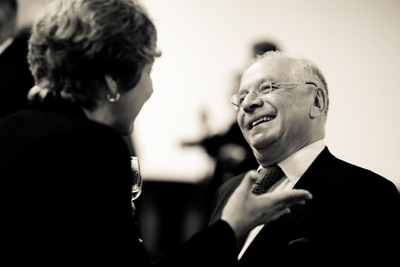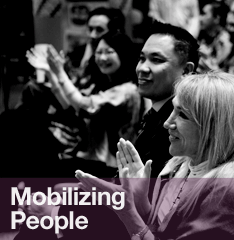
Our Approach to Transformation
What We Do
The Crossland Group specializes in helping leaders of major corporations and international nonprofits design their organizations to execute on their strategy. Our best work is done with clients that know what they want their future to look like, but struggle to put it into action.
Our current work finds us in places as diverse New York, London, Boston, Nairobi, and Rio de Janeiro, doing everything from redesigning a university from the perspective of its students to helping a financial services company build a sales force engine to developing and executing a new strategic plan for the largest youth organization in Latin America.
The Way We Work

"The Crossland approach to co-creation really allowed us to look at our current reality, our potential future, and then work the center between the two. They walked us through the transformation to get to that future." -Francisco Vasquez, Board Member, the Community Foundation for Greater Buffalo

"Crossland was willing to co-create and build a strategy and methodology with us, rather than provide us with the cookie-cutter approach from other organizations." -Bryan Baldwin, Chief Strategy Officer, Bridgewater State University

"Working with Crossland brought cohesion and focus to our process that resulted in a stronger platform upon which to build our program. Crossland's attention to detail and dedication to us as clients was invaluable. Its ability to adapt to changing conditions, collaborate, and problem solve, ensured the successful implementation of our Women's Leadership Council ..." -Dexter Bailey, VP for University Advancement, Stony Brook University

"The Crossland approach to co-creation really allowed us to look at our current reality, our potential future, and then work the center between the two. They walked us through the transformation to get to that future." -Francisco Vasquez, Board Member, the Community Foundation for Greater Buffalo

Engaging With Hearts and Minds: We invest in people first and meet every client where it's at. We focus on getting to the truth of our client’s problem by breaking through unspoken politics and encouraging candid conversations—in our experience, it's the only real way to effect change.
Co-Creating Solutions: Successful execution of strategy is not about rigid processes that fit clients to a methodology. Instead, we believe the methodology must fit the client. The way we make this work is simple: we walk the path with you and build solutions together.
Building Capacity: We are invested partners who work side-by-side with our clients so they can learn and feel ownership along the way. Learning from the process is critical to leaving behind a more agile, aligned organization that is better equipped to grow, iterate, and sustain the change. Read more
New Leader Assimilation:
Q&A With Crossland Managing Director, Kelly Pradhan

Q: What is a recurring challenge you hear about from the executive teams you work with?
A: Leadership transitions—they can be incredibly disruptive and costly to executive teams, and no organization is immune. Some estimates show executive turnover impacting on the bottom line to the tune of 500 percent of total compensation costs. Yet, many leaders are left to their own devices to navigate their transition, which can often result in a hard landing.
Q: What does “landing well” look like for a new leader?
A: First, it’s about creating stability. When a new leader joins an organization, there are varying degrees of disruption given the change in organizational dynamics. Expediting and formalizing a leader’s onboarding process speeds up alignment and adds transparency to the process.
Second, it’s about energizing the team and accelerating learning. An interactive, facilitated process does both by providing a forum for validating information, correcting misconceptions, and providing a safe and supportive environment for any other topics that need discussing. In effect, the assimilation process becomes the first teambuilding experience with the new leader, and the first time that the team has the opportunity to hear his/her perspectives. Read more







